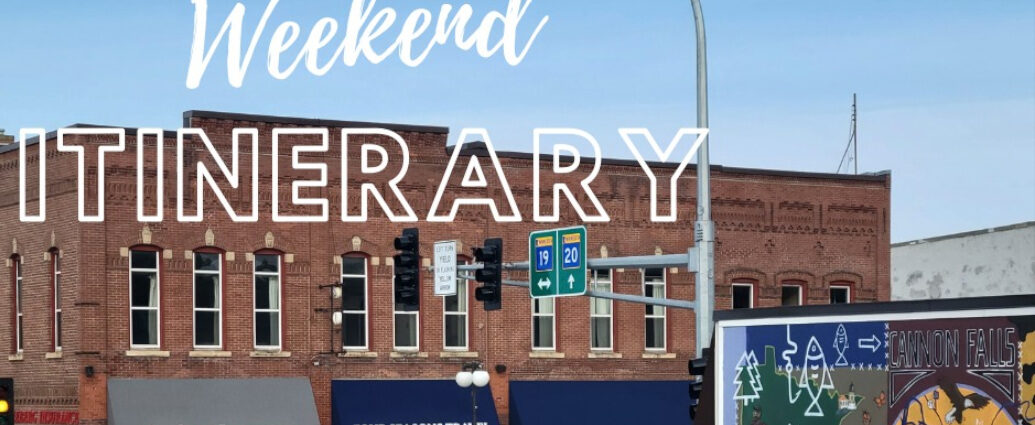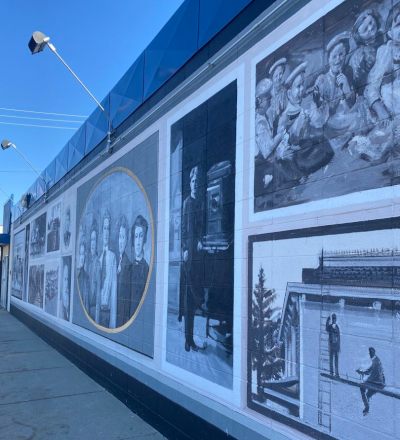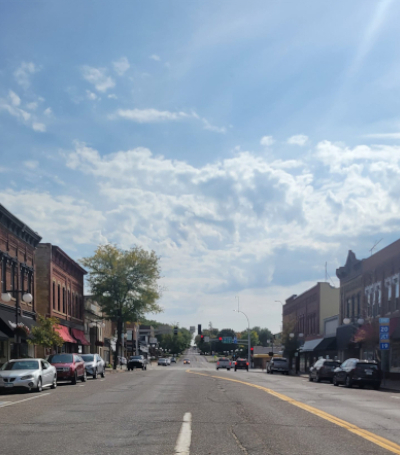 Just east of Highway 52, between St. Paul and Rochester, lies the quaint riverside community of Cannon Falls, MN. In Cannon Falls and the surrounding area, you can savor delightful dining experiences at charming local eateries, offering everything from classic comfort food to gourmet cuisine. Dive into outdoor adventures like hiking, biking, or kayaking along the scenic Cannon River, immersing yourself in nature’s beauty. Explore historic downtown featuring quaint shops brimming with unique treasures and find cozy accommodations to unwind after a day of exploration. Cannon Falls offers a delightful array of activities for those seeking a perfect blend of small-town charm and natural beauty! It’s a great place to spend the day…or a lifetime.
Just east of Highway 52, between St. Paul and Rochester, lies the quaint riverside community of Cannon Falls, MN. In Cannon Falls and the surrounding area, you can savor delightful dining experiences at charming local eateries, offering everything from classic comfort food to gourmet cuisine. Dive into outdoor adventures like hiking, biking, or kayaking along the scenic Cannon River, immersing yourself in nature’s beauty. Explore historic downtown featuring quaint shops brimming with unique treasures and find cozy accommodations to unwind after a day of exploration. Cannon Falls offers a delightful array of activities for those seeking a perfect blend of small-town charm and natural beauty! It’s a great place to spend the day…or a lifetime.
How Cannon Falls Got Its Name
In historic times, Native Americans and traders frequently hid their canoes near the river’s mouth, away from the heavily traveled Mississippi River, because of this the French Fur Traders named the stream “Riviere aux Canots” or River of Canoes. Easterners hearing the French pronounce “canots” thought they were saying Cannon, and the Cannon River it became. The town is named after the river and the falls, a natural cascade located along the Little Cannon River. In 1853, father and son, Richard & William Freeborn traced the Cannon River upstream to its falls. The two explorers kept their find a secret until they could return a year later to stake a claim. The city was settled in 1854. It is the only city in the world named Cannon Falls.
Cannon Falls Historical Museum
Cannon Falls Historical Museum is housed in the 1888 Cannon Falls Fire Hall. The Italianate building is one of the nation’s oldest surviving fire halls and is listed on the National Historic Register. The museum highlights the communities settlement pattern from the flour boom of the late 19th century, 2 fires, which shaped the look of the town today and one of the town’s most well known citizens Col. William Colvill, made famous by the Battle of Gettysburg. The museum includes a 1920 school room and a host of photos, memorabilia and artifacts from the area’s past.
Colonel William Colvill Statue and Monument
The first Minnesota Volunteers, under the leadership of Colonel William Colvill, are credited by many Civil War Historians with saving the Battle of Gettysburg. This local hero and his wife Elizabeth are buried in the Cannon Falls Cemetery. A statue and monument were placed at the site in 1909 and President Calvin Coolidge journeyed to Cannon Falls for the 1928 dedication. A replica of the statue can also be seen at the State Capitol in St. Paul, Minnesota. The Cannon Falls Cemetery is located along Highway 19 on the eastern edge of Cannon Falls.
Cannon Falls Veterans Memorial
The Cannon Falls Veterans Memorial was constructed to honor and remember Cannon Falls Veterans and is located at Two Rivers Park near historic downtown Cannon Falls.
Goodhue County History Center
The Goodhue County Historical Society is the oldest county historical society in Minnesota. It was chartered in 1869. After 37 years in the basement of the County Courthouse, the Goodhue County History Center moved into its current home in the Baptist Old Peoples Home on College Hill in Red Wing, Minnesota. Two major remodeling projects in 1989 and again in 1992 increased storage and exhibit space.
Vasa Museum
Located near the Vasa Lutheran Church (1869), the Vasa Museum celebrates one of Minnesota’s first Swedish-American settlements. The building (1862), considered a center for early Swedish culture, has been restored to its 1901 appearance. The Vasa Lutheran Church was founded in 1855 by Eric Norelius, who also founded Gustavus Adolphus College and several other Swedish Lutheran Churches in the area. Norelius also helped to establish Minnesota’s first orphanage (1865) in Vasa. Norelius is buried beside the church.
Vasa is located off Highway 19 just 8 miles east of Cannon Falls.
Historic Downtown Cannon Falls
Cannon Falls has a wealth of buildings on the Historic Register. In 2000, 29 buildings in the downtown commercial district of Cannon Falls were put on the National Register of Historic Places. The district is an excellent example of a small Midwestern agricultural service community with most of the buildings constructed in a period from 1880-1915.
For a copy of the Historic Walking Tour Booklet or for more information contact the Cannon Falls Chamber of Commerce. Cannon Falls- “Discover Your Fun With Us”




